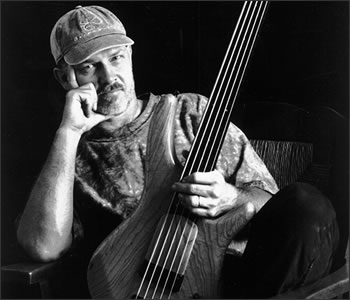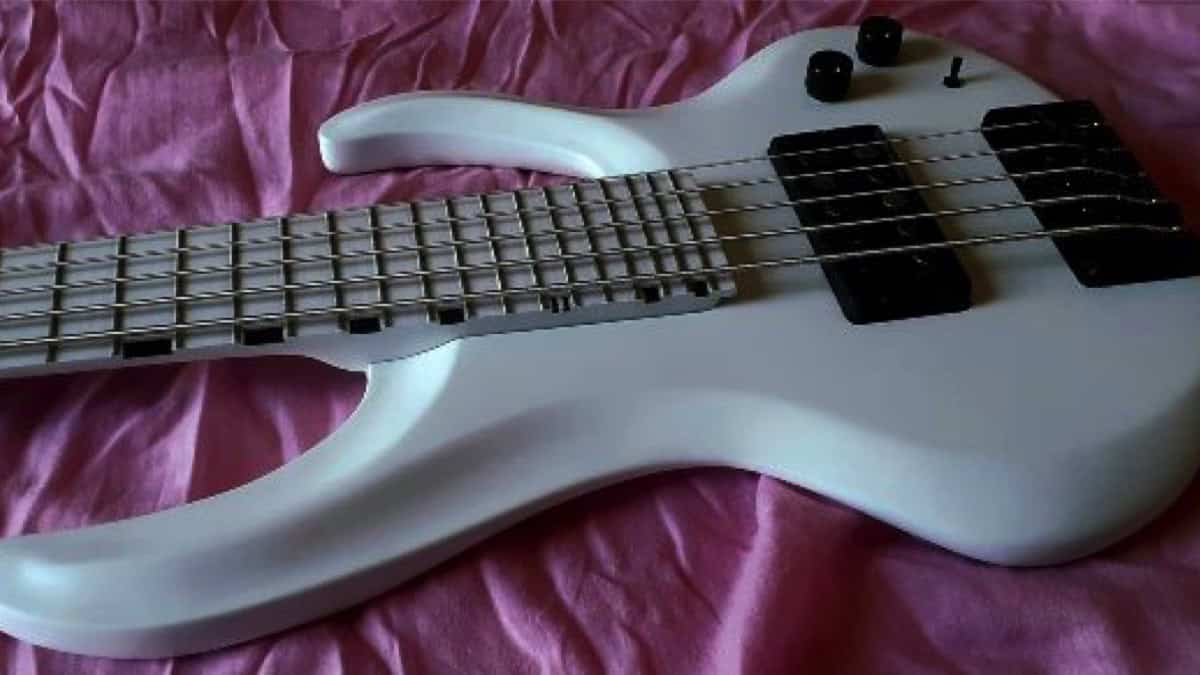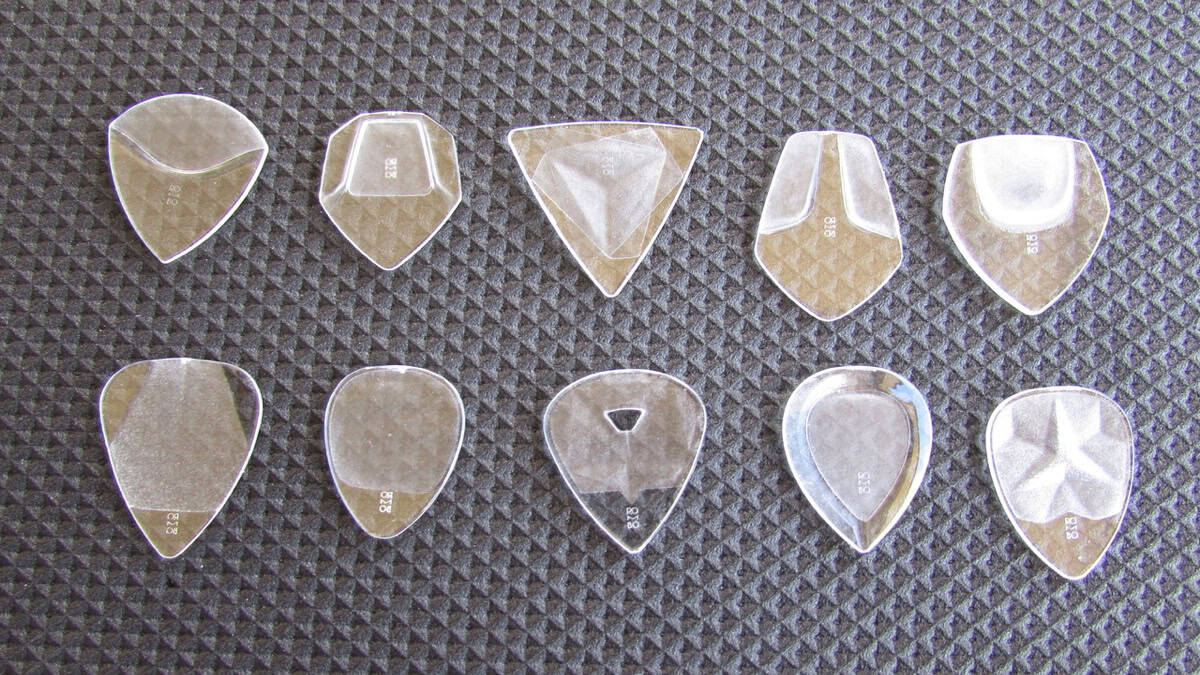Latest
Willis Takes on Your Questions


I know that you’re a proponent of the rest stroke to get that added “thump” to all the notes, but what happens when things speed up? At what point do you stop using the rest stroke? Is it some kind of tempo line that you cross?
Thanks,
Jerry
Hey Jerry,
I’m not conscious of when my hand uses the rest stroke or when it doesn’t. Of course tempo plays a part but I suppose the role of the bass also contributes. I mean, you don’t necessarily want that “thumpy” attack on every note of a solo. So your question got me to wondering what’s going on?
So . . . this is an almost creepy look at the technique that I use to play a typical solo at a tempo of 180 (Giant Steps changes):
————
Mr. Willis,
Enjoyed the new Actual Fiction. Downloaded from iTunes. Can’t find CDs that easily anymore, especially Jazz.
My question is regarding your choice of MTB. Liked the pics on your site. Also an MTBer. Currently using a Giant Hardtail though. Interested in the switch to Carbon, and rear suspension. Also good for Cross Country or do you get alot of pedal bobbing?
Regards,
Paul
Hey Paul,
Thanks for the kind words and your support of legal downloading – (try shopping at my site for the actual CD 😉
Man, I can’t imagine riding the trails I ride now without full suspension. Unless you’re a super-elite-skinny-cross-country-gram-counting-professional-racer-wannabe, full suspension is the only way to go, especially if you’re gonna spend more than a couple of hours in the saddle. My C’dale Moto is my first carbon fiber bike (rear triangle is aluminum) and it’s been flawless. My biggest surprise is how well it pedals and climbs. Most of the problems involved in rear suspension design have been eliminated in recent years with the development of platform-based rear shocks. They have the sensitivity to distinguish between pedal input and bump forces so you and the bike can power up the hills without losing energy to bobbing. I noticed that if I keep my pedal strokes smooth, I get almost no bobbing, but the cool thing is that when there’s an obstacle or small bump, the shock does its job evening out the trail and allows you to have that extra traction on technical climbs. Let me know what ride you end up with.
————
Hey Willis,
I notice you use, and Ibanez installs roundwound strings on your bass. I have always used flatwounds on my fretless (’81 Ibanez Musician) but like the brightness of roundwounds and use them on my fretted. Do you get a lot of wear on your fretboard from the roundwounds, and if so how do your deal with it?
Brian
Hey Brian,
I pretty much get no wear on my composite fingerboard from the roundwounds. One of the advantages of playing with less right hand intensity is that it allows me to have lower action. Lower action means less pressure is necessary to fret a note with the left hand. Less pressure on the string means less wear and tear on the fingerboard. For the 4-5 years I was using ebony, it wasn’t an issue then either, although you can expect the roundwounds to eventually do something to the ebony. One thing always to avoid is “pulling” on the string (bending it side-to-side) on a fretless. This is exactly not how to get vibrato and will for sure grind away the fingerboard. It’s a useful technique for fretted playing but something you should eliminate wen you’re playing fretless.
————
Hey Mr Willis,
Do you have a set of rules as in when to use the open and close position or would it be up to what feels right?
Thanks alot!
rgds,
Michael
Hey Michael,
It mostly depends on what you’re going to play next – no? 😉 (check the video above)
In teaching my right hand technique, of course, we’ve come across gray areas where it’s possible to use either open or closed. The safest thing is when you encounter something like this – learn it both ways and eventually your suggestion of whatever “feels right” will be the solution.
————
Gary,
Were you by chance ever in a band in Mannheim Germany in the 70,s with your brother.nce!
Obviously, the CIA hadn’t perfected their memory wiping hand-held devices back in ’76. Actually, it wasn’t even a hand-held, it was more like a breifcase. Anyway, by the time the rest of the world reads this, you will have been located via your IP adress and selected memory synapses will have been zapped so you won’t even remember asking this question about my non-existent brother and my non-existent trip abroad back in the 70’s.
————
Hi mr. Willis
In what way has Mile Davis influenced your bassplaying if any?
Anybody that attempts to do anything instrumental – jazz-rock-fusion-funk-avant-garde-etc. had better spend a good part of their time worshiping at the church of Miles. I mean, there aren’t many styles or genres of instrumental music that he didn’t influence heavily or sometimes outright create. As far as a direct influence on how I play, probably not, but as a global influence on the important music of the last 50-60 years – undeniable.
————
Hey Willis!
I have 2 Aguilar GS112 cabs with an Eden Traveler 550 amp. If i get another cab to make 3 x gs112’s
will my amp run too hot or is it bad to run at two ohms all the time?
manythanks
Rob
WHey Rob,
I doubt that the Traveler is rated to go down to 2 ohms. Very few bass amps are equipped to handle that load. Check the manual to make sure.
————
Hey Willis,
I have a question. First of all I’m a HUGE fan of your music and your bass playing. I just notice though, looking through the book of transcriptions of yours as well as many that I’ve done on my own, that it seems like you play almost exclusively pentatonic scales in your improvisations.
On Dominant chords like C7(#9#5) I don’t hear much of the Altered Dominant Scale (C-Db-Eb-F#-Ab-Bb-C) or the
Symmetric Diminished ( C-Db-Eb-E-F#-G-A-Bb-C) for a chord like C13(b9) . Do you purposely avoid or not like the sound of those scales?
And I also don’t hear much chromaticism in your single note lines. Is that a conscious choice? I mean what you do play is killing, without doubt, I guess I’m just kind of surprised that you don’t use other scales more. Anyway, just thought I’d ask.
Thanks,
Lucas Pickford
Hey Lucas,
Thanks for the kind words and your observations. I will definitely plead guilty to pentatonics, no lo contendre (no contest) They provide a very open sound and a great way to create energy, obviously. As far as the diminished scales (or actually scale sequences in general) true, you’re not going to find me playing them in any obvious way because, they don’t readily lend themselves to an efficient way of visualizing harmony and communicating ideas. With those diminished groupings, no matter how I reorganize the notes – most of the time, they still sound like an insertion or intrusion when I try to use them. Finally, without taking offense, I’ll have to take exception to being characterized as not using much chromaticism. Maybe it’s a function of which solo is being scrutinized.
————
Hi Gary, hope you’re well.
On the GWB 35 ramp, what do you use to raise it up, I need to prop it up about 2.5mm next to the pickup and 1mm at the neck. I’ve tried making a few wooden shims for it but they either move when they’re underneath, or just aren’t quite right. Just wondering if you had any tips or tricks for this one, thanks!
Joe
Hey Joe,
Do I know you? No, I didn’t think so. I’m well, though, thanks. OK so around here I’m called Willis (except for that guy above who had is memory wiped so that he doesn’t recognize me now anyway, just gets this funny look on his face ’cause he can’t remember where he knows me)
For the GWB35 ramp, just use some foam – I’ve found that a little 1″ by 1/2″ piece from those thin foam-rubber style yoga mats work great. Experiment – you might need a bigger piece or double thickness – but the foam will hold the ramp in position without slipping out like wood or plastic.
Gear News
New Gear: Alberto Rigoni Signature Bass, the VPR5 by Gaetano Costanzo!

Alberto Rigoni Signature Bass, the VPR5 by Gaetano Costanzo!
Internationally renowned bassist ALBERTO RIGONI (soloist, BAD AS, Vivaldi Metal Project, TwinSpirits, etc.) is proud to announce the release of his signature bass VPR5 made by renowned Italian luthier Gaetano Costanzo!
The bass is entirely handmade in Italy, without the use of CNC or other machinery, and has rather special features. The VPR is a 5-string bass (but also available as a 4-string) with 30 frets, Seymour Duncan pickups, Music Man Alnico style, passive electronics (volume, tone and a switch to select series/parallel/single-coil mode), alder body, and American maple neck and fingerboard. Gotoh tuners that ensure perfect intonation. The bass is totally painted white (nitro finish) but other colors can be requested. The VPR has a weight of about 2.9 kg and suitable for any genre.
For more information contact Gaetanobass77@gmail.com or visit online at www.instagram.com/gaetanocostanzoluthier or www.facebook.com/GaetanoCostanzoLuthier
Bass Videos
Interview With Bassist Graham Stanush

Bassist Graham Stanush…
Return to Dust is keeping Grunge alive and well! They have a new self-titled album that went out on May 3rd, 2024 and will be super busy promoting this project in the near future.
Graham Stanush is the bass powerhouse driving their sound and adding vocals to the mix. Join me as we hear all about Graham’s musical journey, details about the new album, how he gets his sound and their plans for the future.
Featured Videos:
Visit Online:
linktr.ee/returntodust
instagram.com/returntodustband/
twitter.com/Returntodustbnd
youtube.com/@returntodustband
tiktok.com/@returntodustband
Bass Videos
Review: CrystalBright Rombo Picks

CrystalBright Rombo Picks
PR SamplePlaying bass with a pick is still a touchy subject in our community. I believe you should be able to use whatever you need to get your sound. Even though I mostly play with my fingers, I like to check out innovative new picks that might have something new to offer, sonically speaking.
Judith and Carlos from Rombo recently contacted me about a new material called CrystalBright that they have been researching for the last 12 months and offered to send some prototype picks. After trying them out, I put together this video with my findings.
For more info check out @rombopicks
Latest
This Week’s Top 10 Basses on Instagram

Check out our top 10 favorite basses on Instagram this week…
Click to follow Bass Musician on Instagram @bassmusicianmag
FEATURED @sireusaofficial @ricardosguitars @gullone.bajos @godin_guitars @sandbergguitars @adamovicbasses @bassbros.uk @baumguitars @harleybentonofficial @dingwallguitars
Gear
New Joe Dart Bass From Sterling By Music Man

Sterling by Music Man introduces the Joe Dart Artist Series Bass (“Joe Dart”), named after and designed in collaboration with the celebrated Vulfpeck bassist.
Above photo credit: JORDAN THIBEAUX
This highly-anticipated model marks the debut of the Dart bass in the Sterling by Music Man lineup, paying homage to the Ernie Ball Music Man original that all funk players know and love. The bass embodies many of the original model’s distinctive features, from its iconic minimalist design to the passive electronics.

The design process prioritized reliability, playability, and accessibility at the forefront. Constructed from the timeless Sterling body, the Dart features a slightly smaller neck profile, offering a clean tone within a comfortable package. The body is crafted from soft maple wood for clarity and warmth while the natural finish emphasizes the simple yet unique look.
Engineered for straightforward performance, this passive bass features a ceramic humbucking bridge pickup and a single ‘toaster’ knob for volume control. Reliable with a classic tone, it’s perfect for playing in the pocket. The Dart is strung with the all-new Ernie Ball Stainless Steel Flatwound Electric Bass Strings for the smoothest feel and a mellow sound.

The Sterling by Music Man Joe Dart Bass is a special “Timed Edition” release, exclusively available for order on the Sterling by Music Man website for just one month. Each bass is made to order, with the window closing on May 31st and shipping starting in November. A dedicated countdown timer will indicate the remaining time for purchase on the product page. Additionally, the back of the headstock will be marked with a “2024 Crop” stamp to commemorate the harvest year for this special, one-of-a-kind release.
The Joe Dart Bass is priced at $399.99 (MAP) and can be ordered globally at https://sterlingbymusicman.com/products/joe-dart.
To learn more about Joe Dart, visit the official Vulfpeck artist site here https://www.vulfpeck.com/.






